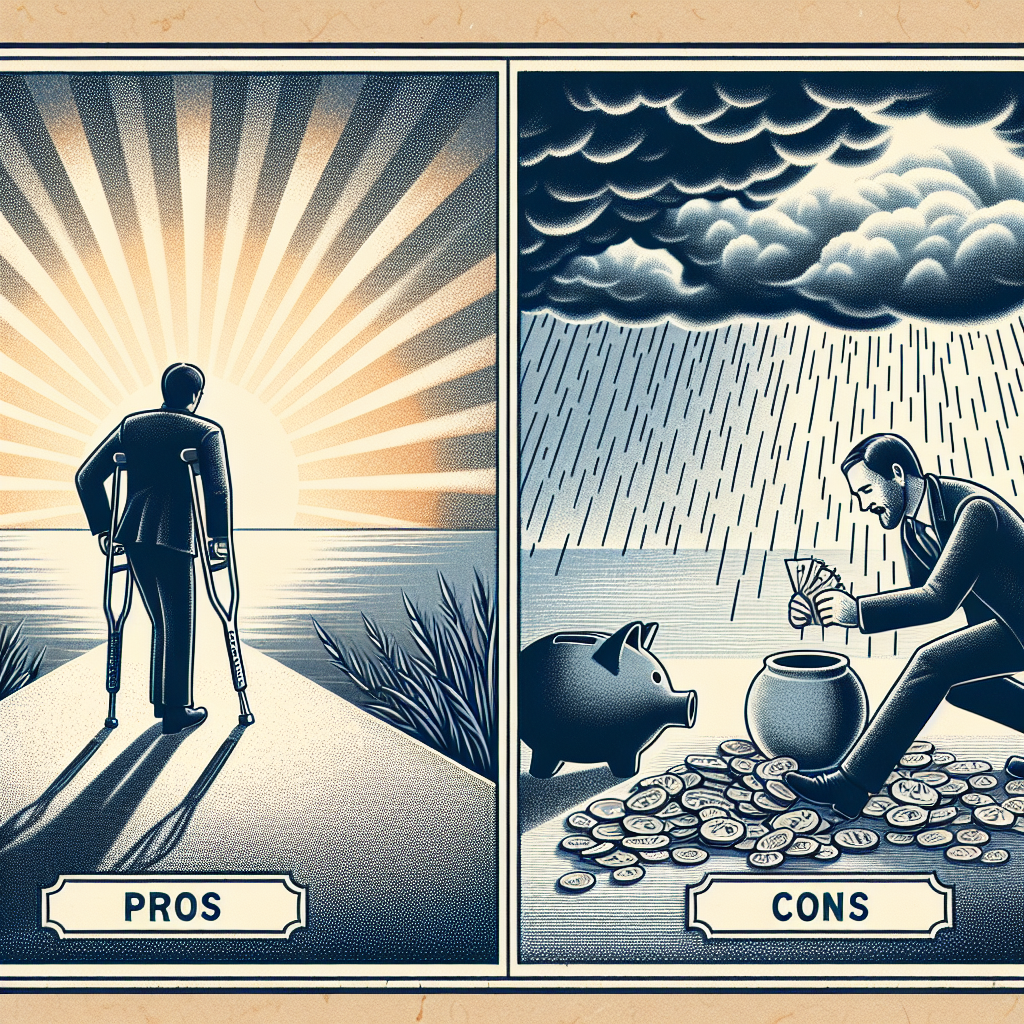Filed under Disability Insurance on
Pros and Cons of Individual Disability Insurance

In today's world, where unpredictability is a constant companion, securing our financial future is paramount. One way to fortify that security is through individual disability insurance—a product designed to provide income protection if illness or injury prevents you from working. While it serves as a financial safety net, like any other insurance product, it has its set of advantages and disadvantages. In this article, we'll delve into the pros and cons of individual disability insurance to help you make an informed decision.
Understanding Individual Disability Insurance
Before dissecting the advantages and drawbacks, it's crucial to grasp what individual disability insurance entails. Essentially, this insurance offers a monthly benefit, typically around 60% to 80% of your salary, if an injury or illness renders you unable to work. It is distinct from employer-provided disability insurance as it’s a personal policy, tailored to fit your unique needs and circumstances.
The Advantages of Individual Disability Insurance
Customized Coverage
One of the foremost benefits of individual disability insurance is its customization. Because it’s a personal policy, you have greater control over what it covers. This customization extends to aspects like benefit period, coverage amount, and policy riders. For high-income earners or those with specific occupation risks, having tailored protection ensures that you're adequately covered.
Portability
Unlike employer-provided plans, individual disability insurance follows you wherever your career takes you. Portability is a significant perk, especially in today's dynamic job market where changing employers, pursuing freelance opportunities, or embarking on entrepreneurship endeavors are common. With portable coverage, you maintain your financial safety net without interruptions.
Comprehensive Protection
Individual disability insurance policies often offer more comprehensive protection compared to group policies. Many group plans apply stringent definitions of disability, often requiring total inability to work. In contrast, individual policies can offer coverage for partial disabilities, enabling you to receive benefits even if you can work part-time or perform limited tasks.
Tax-free Benefits
In most cases, when you purchase an individual disability insurance policy with after-tax dollars, the benefits you receive are tax-free. This means more money directly into your pocket during periods when you might need it most. This contrasts sharply with employer-paid disability insurance, where benefits can be taxable.
Stable Premiums
Individual disability insurance often comes with the option for non-cancelable policies, which means that as long as you pay the premiums, your policy remains unchanged. This stability can be valuable, ensuring your premiums do not increase unexpectedly as you age or if your health status changes. This predictable financial commitment can be a major advantage for long-term planning.
The Drawbacks of Individual Disability Insurance
Higher Cost
Perhaps the most notable downside to individual disability insurance is the cost. Compared to group disability plans, individual policies are typically more expensive. This price can be prohibitive, especially for young professionals or those in lower-paying jobs. However, the higher cost is often justified by the comprehensive and personalized coverage it provides.
Complexity of Policies
Navigating the world of insurance policies can be daunting, and individual disability insurance is no exception. The nuances in policy terms, conditions, and riders require a keen eye and often professional assistance to fully understand. Without sufficient knowledge or expert advice, you might end up with a policy that doesn’t adequately meet your needs.
Stringent Underwriting
Personal disability insurance policies undergo rigorous underwriting processes. Insurers meticulously assess your health, occupation, and other risk factors. This scrutiny can lead to higher premiums or even denial of coverage for individuals with pre-existing conditions or those working in high-risk professions.
Policy Limitations
Despite its comprehensive nature, individual disability insurance can have limitations. For instance, certain policies might have lengthy waiting periods before benefits kick in. Additionally, the definition of what constitutes a disability could vary, potentially affecting your eligibility for benefits. Ensuring clarity on these aspects is essential before commitment.
Industry Trends and Expert Opinions
As more people become freelance and remote work scenarios increase, individual disability insurance is gaining attention for its suitability to the modern workforce. Financial planners often advocate for individual disability policies, especially for self-employed individuals who lack employer-provided benefits. Research by industry analytics firms highlights a slow but steady rise in individual disability insurance purchasing, reflecting growing awareness around income protection.
Experts like Richard Harris, a seasoned insurance advisor, emphasize the importance of evaluating personal scenarios before opting in. Harris recommends assessing the potential financial impact of lost income compared to the cost of premiums, highlighting the invaluable peace of mind individual disability insurance brings despite the cost.
Conclusion: Balancing Protection and Cost
Opting for individual disability insurance is a personal choice that hinges on weighing its pros and cons. This decision requires careful consideration of your financial situation, career risks, and long-term goals. While the costs are tangible, the benefits, flexibility, and security it offers might outweigh the drawbacks for many individuals. Engaging with a financial advisor or insurance expert can provide valuable insights tailored to your unique needs, ensuring you make the best decision for your future financial well-being.
In the tapestry of financial planning, individual disability insurance can be a crucial thread, offering stability and support when life takes unforeseen turns. By fully understanding both sides of the coin—the benefits and the costs—you can confidently decide whether it fits into your own financial strategy.




